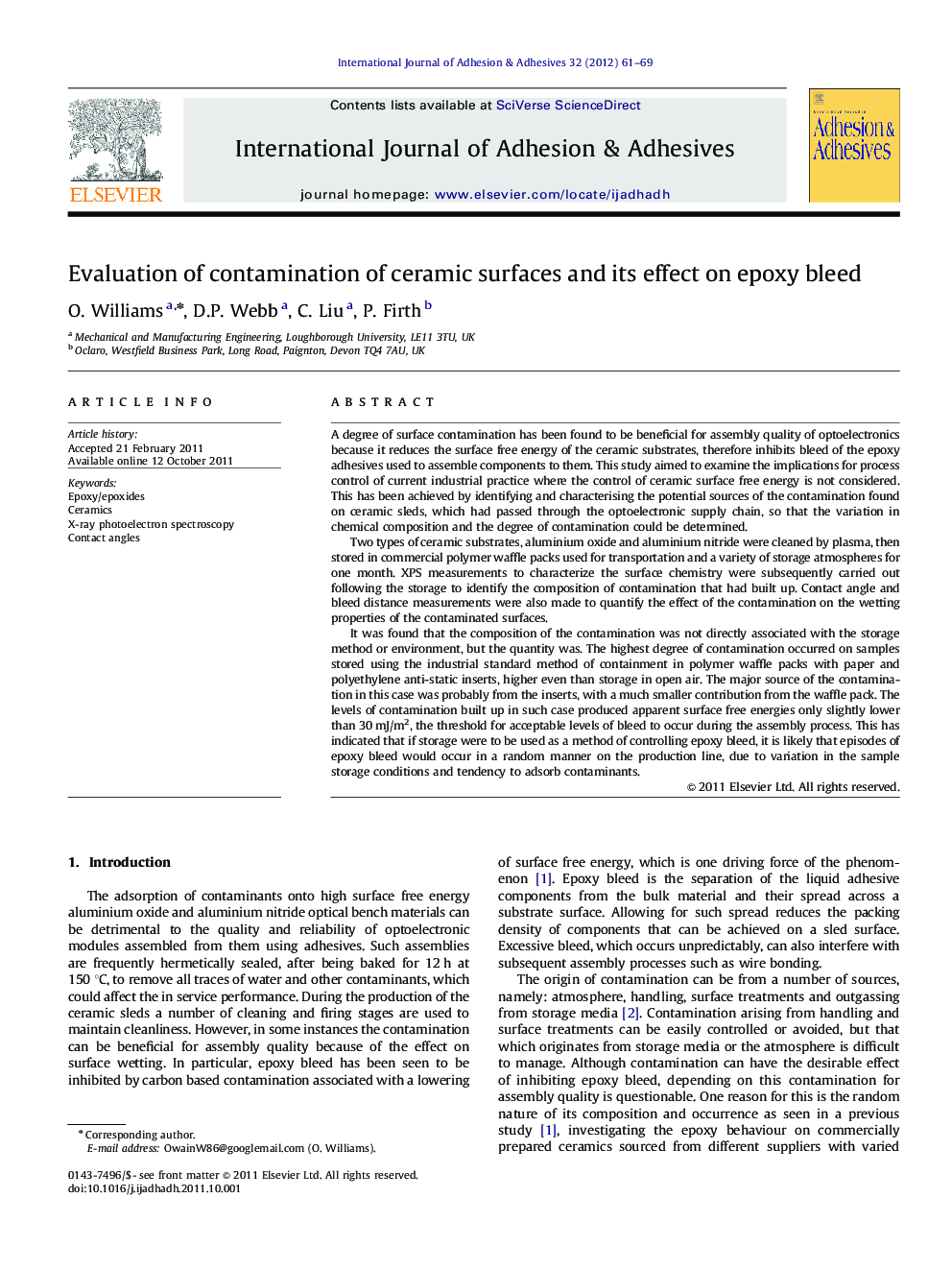| کد مقاله | کد نشریه | سال انتشار | مقاله انگلیسی | نسخه تمام متن |
|---|---|---|---|---|
| 773429 | 1463505 | 2012 | 9 صفحه PDF | دانلود رایگان |

A degree of surface contamination has been found to be beneficial for assembly quality of optoelectronics because it reduces the surface free energy of the ceramic substrates, therefore inhibits bleed of the epoxy adhesives used to assemble components to them. This study aimed to examine the implications for process control of current industrial practice where the control of ceramic surface free energy is not considered. This has been achieved by identifying and characterising the potential sources of the contamination found on ceramic sleds, which had passed through the optoelectronic supply chain, so that the variation in chemical composition and the degree of contamination could be determined.Two types of ceramic substrates, aluminium oxide and aluminium nitride were cleaned by plasma, then stored in commercial polymer waffle packs used for transportation and a variety of storage atmospheres for one month. XPS measurements to characterize the surface chemistry were subsequently carried out following the storage to identify the composition of contamination that had built up. Contact angle and bleed distance measurements were also made to quantify the effect of the contamination on the wetting properties of the contaminated surfaces.It was found that the composition of the contamination was not directly associated with the storage method or environment, but the quantity was. The highest degree of contamination occurred on samples stored using the industrial standard method of containment in polymer waffle packs with paper and polyethylene anti-static inserts, higher even than storage in open air. The major source of the contamination in this case was probably from the inserts, with a much smaller contribution from the waffle pack. The levels of contamination built up in such case produced apparent surface free energies only slightly lower than 30 mJ/m2, the threshold for acceptable levels of bleed to occur during the assembly process. This has indicated that if storage were to be used as a method of controlling epoxy bleed, it is likely that episodes of epoxy bleed would occur in a random manner on the production line, due to variation in the sample storage conditions and tendency to adsorb contaminants.
Journal: International Journal of Adhesion and Adhesives - Volume 32, January 2012, Pages 61–69